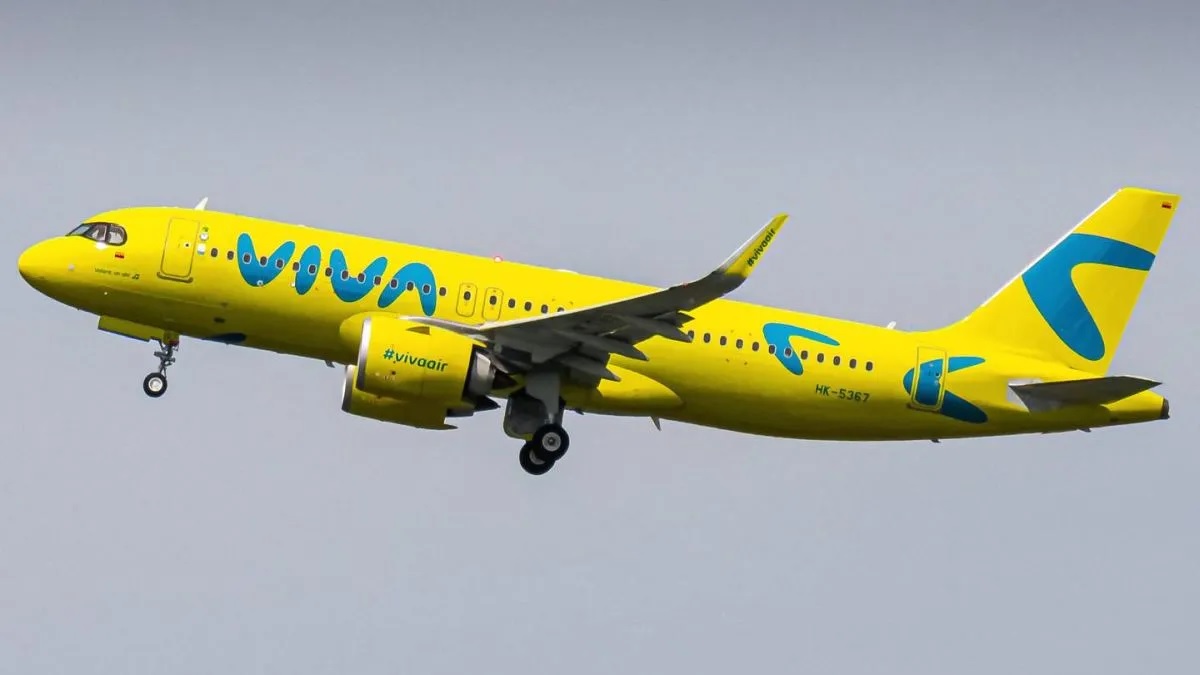Last week, after months of waiting, the Colombian Aviation Authority (Aerocivil) finally approved the integration of Viva Air and Avianca.
However, this decision did not have the expected result.
After the low-cost airline decided in February to cease operations, and because the approval is subject to several conditions, the one-time main stakeholder had to reconsider the feasibility of this operation.

After Avianca learned of the Colombian aviation authority’s decision, it said the next steps are under consideration.
“Given the operational, financial, and technical implications of Aerocivil’s decision, Avianca will review the decision and the impact of the measures proposed by the authority as soon as possible to determine whether they can be complied with,” the airline said.
Avianca argued that Viva Air no longer has the same capacity – route network, aircraft, personnel – as before the temporary suspension of operations.”
“A factor that must be analyzed in detail to determine the relevance of the conditions established by the Civil Aviation Authority.”
In addition, the regulator’s action opens the way for appeals and reconsideration by the affected airlines and other interested parties during the process: Latam, Wingo, Ultra Air, and Aerolíneas Argentinas.
“Until this happens, Avianca does not have the authority to intervene in the operational or financial situation of Viva airline, nor can it resolve the situation of users affected by the low-cost airline, as requested in the resolution,” Avianca’s statement reads.
TURBULENT SCENARIO
For Juan Fernando Puerta, head of aviation law at the Cuatrecasas law firm, breaking off the integration of Avianca and Viva Air would be one of the least desirable scenarios for the market.
“Viva Air would be left without much financial room to resume operations and meet outstanding liabilities.”
“A withdrawal of integration would likely mean that Viva Air’s crisis would worsen,” said the Colombian lawyer.
Although the conditions imposed by Aerocivil have made the integration less attractive, Puerta affirms that they are trying to understand the particular situation of Viva Air and allow the integration and, on the other hand, to balance this situation by avoiding the creation of monopolies on routes and the use of slots at Bogotá airport.
On the other hand, José Cárcamo, a professor at ESAN, assures that the uncertainty about this integration also impacts the old airline.
“Many say that Avianca will make a lot of money if it merges with Viva, but it also risks its survival. If there is no agreement, there are other interested bidders like Latam.”
“If a competitor buys the company, it will be very strong because Viva had very good operational slots.”
“Avianca is coming out of bankruptcy, and it is in their interest to have this market.”
“The regulation requires them to keep the low-cost model, which is valid and benefits the users and Avianca, or the company that buys Viva Air if the negotiations with Avianca fail.”
THE FACTORS BEHIND THE DOWNTURN OF THE LOW-COST AIRLINES.
Following Viva Air’s suspension of operations last month, another Colombian low-cost carrier, Ultra Air, has taken the same action.
In a statement released yesterday, the airline blamed the unfavorable macroeconomic environment.
“The increase in fuel costs and the exchange rate has led to a significant increase in costs for airlines, causing them to operate at a loss in recent months.”
“Airlines have to be efficient in a very competitive and complex environment, such as the current fuel issue and environmental regulations in the future.”
“All of this must be achieved through scale and economies of scale, and that will happen from now on,” said Eliseo Llamazares, LATAM Aviation and Tourism Lead Partner at KPMG.
The way to get there, according to Llamazares, is through industry consolidation.
“Integration is something that has been practiced for many years, but the lack of knowledge on the part of authorities or governments about what the aviation industry is all about has led to a magnifying glass being turned on the integration of purely economic or shareholder-driven companies.”
“Consolidations through integrations or alliances are something natural and necessary, precisely to provide service to passengers so they can fly unimpeded.”
According to the KPMG partner, the profitability of airlines with only a few aircraft is, therefore, almost nil:
“The industry needs economies of scale, it doesn’t make sense for there to be airlines with three, four, or five aircraft, but they start to be efficient when they have 25, 50, or 100 aircraft, and you can reduce costs.”
“When there are tickets like that, the price is very elastic in terms of demand, so airlines can create more demand and generate a lot more traffic,” he says.
In this sense, integration actions, alliances, or mergers will be the trend in the coming months.
“The economic, political, and social situation in Latin America indicates that the economy will shrink, and small companies go bankrupt when there is a crisis.”
“An alternative to avoid this is for another company to buy them out and give them some money instead of getting nothing in case of bankruptcy.”
“This is the only way to survive, especially amid an inflation crisis, high interest rates, and the conflict between Russia and Ukraine. Mergers will be the way out to avoid bankruptcies and keep the business going,” said José Cárcamo.

